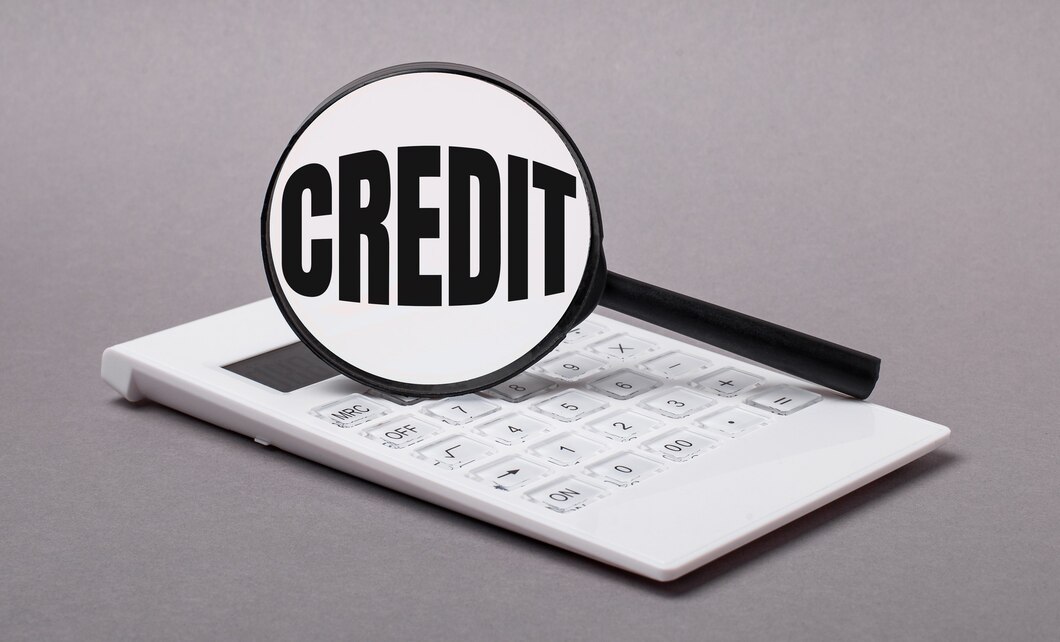The difference between the value of your property and the amount owed on your mortgage and/or other loans secured against it is known as home equity. You can tap into this equity with a home equity loan in Canada.
A conventional mortgage, a home equity line of credit (HELOC), and a reverse mortgage are all examples of home equity loans.
One of the best methods to access the equity in your home is through a home equity line of credit (HELOC). It’s a low-cost alternative to credit cards and personal loans, and it’s secured by the equity you’ve established in your house. Despite these advantages, it’s important to understand the basics of HELOCs before getting an equity takeout.
What is a Home Equity Line of Credit (HELOC)?
A home equity line of credit (HELOC) is a revolving credit line secured by the value of your property. A HELOC, unlike a standard line of credit, allows you to borrow against your equity at a substantially lower interest rate.
You will have access to a pre-approved amount of cash within your mortgage if you get a mortgage with a HELOC option. However, you will have to pay interest on the money you borrow from a HELOC in addition to your regular mortgage payments.
How Does a Home Equity Line of Credit Work in Canada?
A HELOC, or home equity line of credit, works similarly to a revolving line of credit. You can borrow as much or as little money as you need at any moment, up to your maximum credit limit, rather than receiving a single payment. After you’ve been approved for a line of credit, you’ll be given cheques or a debit card to use when you need to draw on it.
A HELOC can be split into two phases, the draw period and the repayment period. The draw period is when you can use the line of credit actively. The repayment term is the amount of time you have to pay back the money you borrowed.
During the draw period, your minimum monthly payments will almost always be primarily the interest. During the repayment period, you will be responsible for repaying the principal.
This could mean a greater monthly payment or a balloon payment when the loan matures. If you pay off the principal within the draw period, you’ll be allowed to borrow again until the draw period ends.
The flexibility of a HELOC is one of its main advantages. A HELOC, like a home equity loan, can be used for anything. It’s great for long-term needs like house improvements, medical bills, or even college tuition.
The amount you can borrow is determined by a percentage of the appraised value of your house minus the amount you still owe on your first mortgage. A HELOC usually has a variable interest rate, which means its rate is based on the fluctuations of an index, such as the prime rate.
Types of Home Equity Line of Credit
There are two types of home equity lines of credit: one is combined with a mortgage, and the other is a stand-alone product. Although similar, they work in different ways.
Home Equity Line of Credit Combined With a Mortgage
The most popular HELOC is a home equity line of credit combined with a mortgage, which is what we’ve been describing thus far. This form of HELOC is available from most financial institutions, albeit it may go by another name, such as a Homeline Plan.
The HELOC’s mortgage is a typical mortgage with a term and amortization period, and you make regular payments toward both the principal and the interest.
The HELOC portion is a revolving line of credit in which you only pay interest on the money you take out. You’ll have more equity available as you pay off your mortgage. As a result, the total amount you can borrow with your HELOC grows.
Stand-Alone Home Equity Line of Credit
A stand-alone home equity line of credit does not incorporate your mortgage. It’s still a home-guaranteed revolving line of credit, with a maximum borrowing limit of 65 percent of your home’s market value. You won’t be able to borrow more money when you pay down your mortgage principal because this HELOC isn’t related to your mortgage.
What Can You Fund with a Home Equity Line of Credit?
A home equity line of credit can be used for a variety of reasons. Some of the most common ones are:
- Managing unexpected expenses
- Debt consolidation
- Repaying another mortgage
- Covering large personal expenses
- Covering large business expenses
- Health expenses
- Covering the costs of a big event such as a wedding
- Educational fees
- Auto loans
- Purchase of an investment property
- Any other life situation
How to Qualify For a HELOC in Canada
A home equity line of credit requires only one application and approval. You can use your home equity line of credit whenever you want after you’ve been approved.
The main requirement for a home equity line of credit is the amount of equity you have in your property. To get a stand-alone HELOC you need a minimum down payment or equity of 20 to 35%.
Some other requirements for a home equity takeout are:
- A credit score of 620 or above
- Proof of income
- An acceptable DTI or debt to income ratio
You must pass a “stress test” to qualify for a bank’s home equity line of credit. You’ll have to show that you can afford payments at a qualifying interest rate, which is usually higher than your contract’s actual rate. Even if you don’t need mortgage loan insurance, you must pass this stress test.
When you apply for a home equity line of credit, credit unions and other non-federally regulated lenders may utilize this stress test. However, they are under no obligation to do so.
Banks usually use a higher interest rate than a conventional mortgage. . However, this rate can be negotiated.
If you own a property and want to use the equity in it to get a home equity line of credit, you’ll also be required to:
- Provide proof of ownership
- Provide mortgage details such as your mortgage terms and conditions
- Take out your property’s appraised value
- Have enough income to debt service this new HELOC
- Have an ample credit score
- Hire certain professionals such as a lawyer or notary, title service company, and a broker.
Optional Credit Insurance
Your lender might offer you credit insurance if you’re approved for a home equity line of credit.
Optional credit insurance is life insurance, severe illness, and disability insurance that can help you make payments on your home equity line of credit, usually up to a maximum amount, if you:
- Lose your current main stream of income
- Undergo any severe injuries and/or disabilities
- Become critically ill
- Pass away
You do not need to take optional credit insurance to be eligible for a home equity line of credit.
The coverage provided by optional credit insurance products has significant limitations. Before purchasing these products, read the terms and conditions carefully and ask questions if you have any issues.
Check to see if you already have insurance coverage via your work to pay off your debts in the event of death or disability before purchasing extra credit insurance. Compare the coverage provided by different insurance products, such as life and health insurance, to see which suits your needs and provides the best value.
How Do Interest Rates Work With an Equity Takeout
The entire financing available with a HELOC mortgage is not advanced upfront. Instead, you can use as much or as little of the HELOC as you like, and you only pay interest on the amount you’ve taken out.
A variable-rate linked to the Prime Rate is used to calculate interest on a daily basis. HELOC rates, on the other hand, are frequently higher than variable mortgage rates, and the link to Prime can technically fluctuate at any time at your lender’s discretion.
A variable mortgage rate, for example, is frequently Prime +/- a number, such as Prime – 0.35 percent. HELOC rates, on the other hand, are set at Prime + a figure, which your lender can adjust at any moment.
You can always negotiate these interest rates with your lender. When deciding on an interest rate lenders consider the borrower’s:
- Income
- Property value
- Equity
- Credit score
- Debt history
- Past relations with the lender
These rates are subject to change at any time via your lender. If there is a change, your lender should notify you. The interest rate on your home equity line of credit and the amount you pay will be affected by any changes in the prime lending rate.
Make sure you only borrow an amount of money you can afford to repay. This will assist you in dealing with the possibility of an interest rate increase.
Fees Associated With a HELOC
Some common fees associated with a HELOC are:
- Valuation fees: fees for sending an appraisal company to assess the worth of your home are charged by your lender or may be covered.
- Legal fees: this fee is charged by your lawyer or title service business to register the collateral charge on your home.
- Title search fees: This is another legal charge that ensures your home is free of liens.
- Administration fees: This fee is charged by your lender for the setup and maintenance of your account.
- Credit insurance fees: Payment for optional life, critical sickness, disability, and job loss insurance.
- Discharge or cancellation fees: If you cancel your home equity line of credit and remove the collateral charge from your home’s title, your lender or notary will charge you this cost.
Talk to your lender to have an extensive list of fees associated with your home equity line of credit.
Pros and Cons of a HELOC
There’s no doubt that a home equity line of credit (HELOC) can be beneficial. If you have enough equity, you can acquire an low-interest loan with flexible payback terms. However, HELOCs can be exploited to the point that some people treat their homes as ATMs. Before applying for a HELOC, think about the benefits and drawbacks.
Home Equity Line of Credit Pros
- Credit is readily available. You can invest that money towards anything you desire, such as a rental property, debt consolidation, or retirement savings.
- The interest rate is low. Interest rates on HELOCs are usually low, especially when compared to credit cards.
- Payments are based solely on interest. You can better control your financial flow because you simply have to pay interest.
- Additional payments are simple to make. Prepayments are not subjected to any penalty.
- Borrow as much as you need. This isn’t a one-time loan. You can borrow money whenever you need it.
Home Equity Line of Credit Cons
- Repayment necessitates self-discipline. You’ll need to make extra payments to pay off the debt if the minimum payments are simply for interest.
- Large sums of money are easily accessible. You may be accepted for a large sum, which may tempt you to spend more.
- It can be tough to switch lenders. If you have a HELOC, you might need to pay it off completely before transferring lenders.
- It’s possible that you’ll lose your home. If you don’t make your payments, your lender may seize ownership of your home.
Tips To Consider Before Getting a Home Equity Line of Credit
- Recognize whether you require additional credit to reach your objectives or if you could instead build and use savings.
- Consider things like flexibility, fees, interest rates, and terms and conditions if you decide you need financing.
- Make a detailed plan for how you’ll put the money you borrow to good use.
- Make a budget for your initiatives that is reasonable.
- Calculate the credit limit you’ll spend.
- Look around and talk to a few different lenders.
- Make a payback plan and stick to it.








